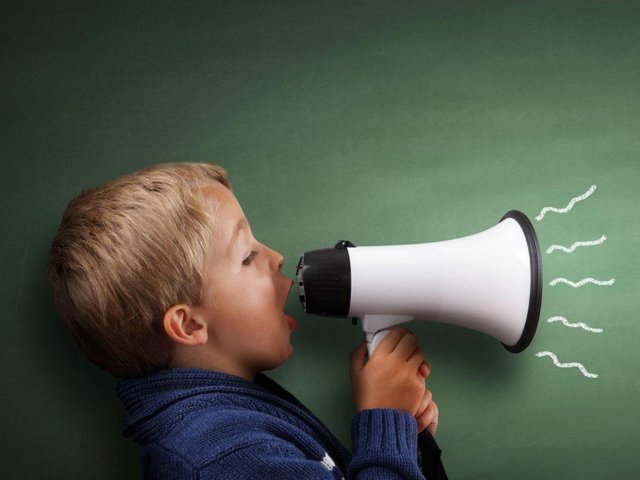Handling Children Who Are Too Active and Cannot Be Silent

source :https://www.todaysparent.com
Quite a lot of parents who feel overwhelmed face the attitude of children who can not be quiet. Active children tend to want to do various activities, such as running, jumping, playing with friends, playing with toys, or continuing to make things in the house mess. This of course can cause parents or caregivers to sometimes feel troubled, especially if they are doing activities such as cleaning and cleaning the house.
In addition to at home, parents or caregivers are also often troubled to serve children who cannot be quiet while outside the home, for example in public places because of their overactive behavior.
Active Children Does Not Mean ADHD
Keep in mind that active children are different from attention deficit hyperactivity disorder (ADHD). Children with ADHD have behavioral symptoms that are hyperactive and tend to be impulsive accompanied by lack of attention or concentration. Children with ADHD often experience disruption while studying because of difficulty focusing and concentrating.
Whereas active children are children who have high kinesthetic intelligence, so they tend to not be able to be still but can still focus and concentrate while studying. In other words, active children's behavior is not an abnormality. For this reason, parents must know how to nurture and educate children who tend to not be able to shut up properly.
Every Child Is Different and Unique
Even though parents educate children in the same way, the nature of children in one family can be different. This is why in nurturing and educating children, parents must be smart to adjust to the child's learning patterns. One child should not be compared or compared with the other child, let alone regarding the learning process and learning style.
What is learning style? The way individuals absorb information is often termed learning styles. This learning style can help parents to stimulate children's intelligence to appear optimal.
There are children who tend to be more happy with the visual learning style (vision), there are those who are more happy with the auditory learning style (hearing), and some are more likely to prefer kinesthetic learning (movement).
Everyone is blessed with these three learning styles (nature). However, the development of each learning style is also influenced by nurture factors, namely the experience and stimulation of the environment, thus enabling a more dominant developing learning style.
Children with Kinesthetic Learning Styles
Active children tend to be more suitable for kinesthetic learning styles. Kinesthetic learning styles require the child to move more, and interact with the object of learning.
Therefore, parents need to look for various types of positive activities that children can do. For example if a parent is cleaning the house, the child can be invited to help clean the toys themselves or other small things that can be done. If parents are cooking, children can also be involved to do easy work, so that children do not interfere with the work being done by parents.
For activities outside the home, choose outdoor activities that can fulfill the child's desire to move, such as playing in the park, swimming, or other physical activities. When outside the house, always pay close attention to the child so as not to run into the middle of the road or disappear from your sight.
For how to learn, children with kinesthetic learning styles prefer to learn by practicing the things they learn directly. Therefore, use props or teach children to immediately practice them. For example, when children are learning mathematics, use toys in the form of numbers or objects that can be held by children. When you are teaching children to read prayers or do worship, then invite them to immediately practice it. Give an example first and let the child imitate your movements.
Parenting for Kinesthetic Children
Can care for children in the right way so that he becomes a smart and happy child is certainly the desire of every parent. For this reason, you need to pay attention that there are several factors that influence children's development.
There are nature factors that are already familiar and difficult to change, such as body shape, age, and others. There are also nurture factors that come from the environment, in the form of nutrition, stimulation, parenting, and others. In this second factor, you can play a role in forming smart-behaved children.
One nurture factor is parenting, which is a particular parenting style that is used consistently by parents to their children. There are four types of parenting namely authoritarian (authoritarian), authoritative (democratic), uninvolved (not involved), and indulgent (permissive).
The four parenting styles can be applied alternately according to the situation and conditions faced. When the child is approaching baha
Thanks for using eSteem!
Your post has been voted as a part of eSteem encouragement program. Keep up the good work! Install Android, iOS Mobile app or Windows, Mac, Linux Surfer app, if you haven't already!
Learn more: https://esteem.app
Join our discord: https://discord.gg/8eHupPq